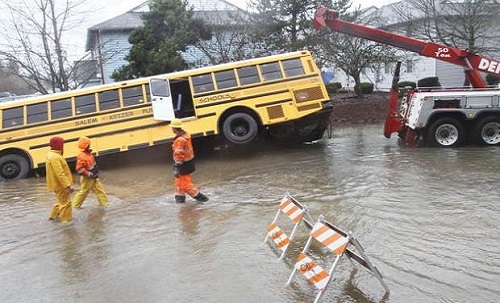
City of Salem Stormwater Master Plan Update (OR)
WEST is developing an updated stormwater master plan for the City of Salem, OR. The updated master plan is required for renewal of the City’s MS4 permit. The current scope includes the development of Basin Plans (Drainage System Improvement Plans) for three of the twelve basins, including the Mill, Pringle, and Battle Creek basins. These three basins are inter-connected and pose a significant flood risk to the City. The Basin Plans will focus on projects that both reduce flood risk and improve habitat.
One aspect of the Salem Stormwater Master Plan update is the development of multiple stormwater models using XP-Storm, which is a dynamically linked hydrologic and hydraulic model. This has required the updating of subbasin delineations for each of the three drainage basins and the acquisition, review, and integration of pipe, cross section, and bridge data into a Geographic Information System (GIS) database that when complete is imported directly into XP-Storm. Hydrologic modeling is performed using storm’s RUNOFF method, which employs Horton Infiltration to represent the non-linear nature of watershed losses.
This allows the model to determine the location and discharge for each flow split. The 2-D modeling is not only improving the accuracy of the models, but also providing a visualization of the temporal and spatial variation of flood extent and flow velocity. Model calibration is being performed using available high watermark data and flow measurements from recent floods. After calibration, various alternatives will be modeled to investigate flood risk reduction alternatives. The Basin Plan for Battle Creek was recently completed and provided to the City. The basin plan included an evaluation of a number of project alternatives to help reduce flood risk, both under current conditions and full build-out conditions. The project alternatives that produced the greatest decrease in flood risk were selected by the City for inclusion in the list of recommended stormwater capital improvement projects. Project construction cost estimates and annual maintenance costs were developed for each project. The selected projects were categorized as short-term (less than 10 years) and long-term (greater than 10 years) and were prioritized to prevent downstream impacts as a result of upstream improvements.

